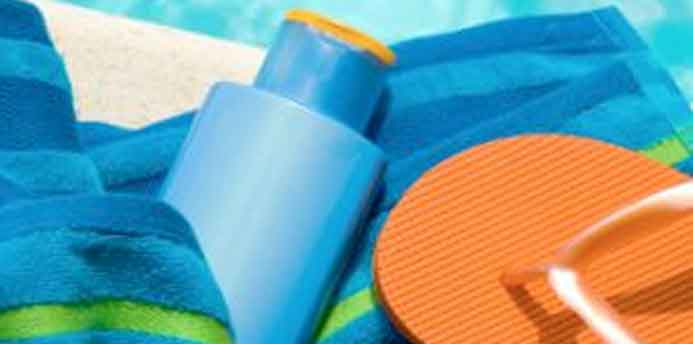Biking through the neighborhood, planting flowers in the backyard, swimming in Lake Michigan—the reasons to spend time in the sun are countless.
But with dozens of sunscreens to choose from, how do you know which ones are safest? Here are seven tips to keep your skin healthy all summer long.
Don’t obsess over numbers.
A sunscreen with SPF 30 should provide sufficient UVB protection. SPF 30 blocks 97 percent of UVB rays, which cause initial sunburn. Any SPF higher than 30 is usually unnecessary. “The numbers are more of a selling tool,” says Dr. Amy Brodsky, a dermatologist in Glenview. It’s best to buy a broad-spectrum sunscreen that protects against UVB and UVA.
Examine the ingredients.
SPF only measures the degree of UVB protection, but it’s also important to guard your skin from UVA rays, which lead to wrinkles. Look for ingredients like titanium dioxide and zinc oxide, physical blocks that protect against both UVA and UVB.
Dr. Peter Lio, assistant professor of dermatology at Northwestern’s Feinberg School of Medicine, says these ingredients tend to be less cosmetically elegant and more expensive, but they literally block everything—even visible light. Other ingredients that help block UVA include avobenzone and ecamsule.
Rub, don’t spray.
Skip the spray sunscreen because chances are, you won’t apply enough and will burn. Stick to the old-fashioned lotion. (But if your kids won’t sit still long enough to slather them with sunscreen, the spray is better than nothing.)
Take a shot every two hours.
One ounce, about enough to fill a shot glass, should be enough sunscreen to cover your body, according to the American Academy of Dermatology. Put on sunscreen 15 to 30 minutes before going outside, and re-apply every two hours or after swimming or sweating. Don’t forget your lips and the tops of your feet!
Shield your kids.
For children under 2, Lio suggests dressing your kids in sun-protective clothing or avoiding the sun altogether, rather than putting chemicals on their skin.
Store sunscreen inside.
Sunscreen may destabilize if left in a hot car or in the sun, Brodsky says. Most sunscreen has a shelf life of three years, so check the expiration date. But more importantly, experts agree: You can use sunscreen from last summer, but if you’re applying the adequate amount, you should be burning through bottles long before Labor Day.
Check your “birthday suit” on your birthday.
The AAD recommends a full body exam each year. If you see any changes, growths or bleeding, make an appointment with a dermatologist. But don’t freak out. Skin cancer, when caught early, is very treatable.
Some of our favorites:
Anthelios by La Roche-Posay uses Ecamsule, a patented molecule that helps stabilize avobenzone to block UVA.
Blue Lizard SPF 30 has 5 percent titanium dioxide and 10 percent zinc oxide. It comes in a baby version
, too.
Cotz contains only titanium and zinc—the name says it all.
Neutrogena Ultra Sheer contains Helioplex, a stabilizer that helps sunscreen better maintain its effectiveness.
Zia Age-Defying Solar Care Face SPF 30 blends sun filters with soothing nutrients like cucumber and arnica.

